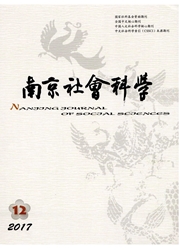

 中文摘要:
中文摘要:
本文以08年及以前的3万余家外企数据为基础,利用"平均值+标准差"、Moran’s I指数及泊松和负二项模型来研究上海外资企业引导下的经济空间布局演变、集聚和影响机制。结果显示:1990年之前外资极少,分布极为分散,集聚主要分布在中心城区;1991-2000年外资空间逐步从中心城区扩展到近郊和远郊扩展,在沪西外资出现向虹桥-漕河泾-莘庄-松江新城一带集聚的特征,浦东崛起为外资的高地并以张江和金桥为中心形成集聚高地;2001-2008年外资的分布和集聚空间均向园区转移;最终,上海的外资经济空间在近郊和远郊形成了三层次多中心连片发展格局。回归结果显示,外资区位选择受地方制度和市场因素的双重影响,不同的制度因素的影响存在一定差异,且随着时间的发展,市场在外资经济空间演变过程中的作用越来越大。
 英文摘要:
英文摘要:
This research examines the change of the economic space of Shanghai based on location of foreign direct investment(FDI) enterprises.We find that before 1990 almost all of the FDI enterprises agglomerated in the city center.From 1991 to 1999,Pudong rose sharply to become a region for FDI agglomeration.Since 2000,three agglomeration centers have been formed.The research has also found that both market and state have an important role in FDI location and spatial reorganization,and the power of market is raising quickly.
 同期刊论文项目
同期刊论文项目
 同项目期刊论文
同项目期刊论文
 期刊信息
期刊信息
